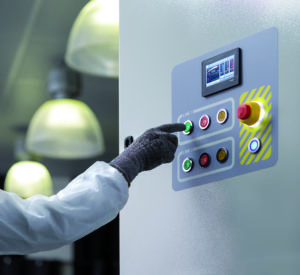Digitally driven energy management initiatives are allowing companies to operate sustainably while gaining the rewards of reduced energy costs and a smaller carbon footprint. Microgrid adoption, increased distributed energy resources (DERs) use, better DER integration, and battery storage are some of the technology tools that drive these energy improvements across industries, from digitized manufacturing plants to smart distribution centers.
According to Accenture, the retail industry, for example, has a big opportunity to save money and improve efficiency by adding renewable energy sources and reducing overall energy consumption by targeting energy-intensive areas of the business. The report found that by making these changes, distribution centers and other areas of the retail industry can benefit from an expansion of their energy portfolio, revenue growth, cost reductions, risk management, reduced risk from energy price increases, and protection and preparation for future environmental regulations.
While all companies can benefit from improving energy use and management, enhancing efficiency and resiliency are particularly important in countries that have a high level of energy consumption. Looking at a country like Finland, not only it is home to many energy-intensive industries that put a strain on the grid, there are reliability issues because its power grid is susceptible to failure due to wind, fallen trees, and arctic winter temperatures.
That’s why innovative smart technology and microgrid control systems are becoming a critical part of the country’s energy future. Finland already has the one of the highest shares of renewable use in Europe, but the country’s long-term aim is to become a carbon-free society. To reach this goal, Finland and its industries must digitize its energy systems.
Digitization allows businesses to optimize the integration of distributed energy resources, like Finland’s abundant hydro power and solar resources, improve energy efficiency, increase sustainability, pinpoint energy waste, and monitor, manage, and forecast their energy use. Microgrids can be used to build a more sustainable power system, as well as support battery energy storage systems that provide reliable energy.
Lidl Finland is already putting this technology into action in its new distribution center. It is the country’s largest industrial microgrid and advanced building automation center and is located in Järvenpää, a town in the south of Finland. Not only is the grocery store’s distribution center carbon neutral — using 100% renewable energy sources — the smart energy solutions and building automation systems are expected to bring energy cost savings of 50% while reducing CO2 emissions by 40%.
The distribution center uses an advanced IoT-enabled building automation system and microgrid technology to optimize electricity, co-generation of heating and cooling, and accurately monitor and steer the property’s energy usage with its smart microgrid that maximizes the use of on-site resources using real-time data and predictive machine learning algorithms. The microgrid also simplifies the integration of DERs, including a 1,600-panel solar power plant on the building’s roof that enables the use of solar-generated electricity in the co-generation of heating and cooling. Not only does this solar power meet the building’s own energy needs, it can also heat water for some Järvenpää residents’ homes.
In addition, an innovative battery energy storage system ensures continuous power distribution and a quick reaction to peaks in Finland’s grid, which is especially important during consumption peaks due to cold weather.
Lidl Finland is just one example of how digitally driven approaches can revolutionize companies’ operations. You can learn how other companies are transforming their business in our new report, Digital Transformation Benefits Report.



